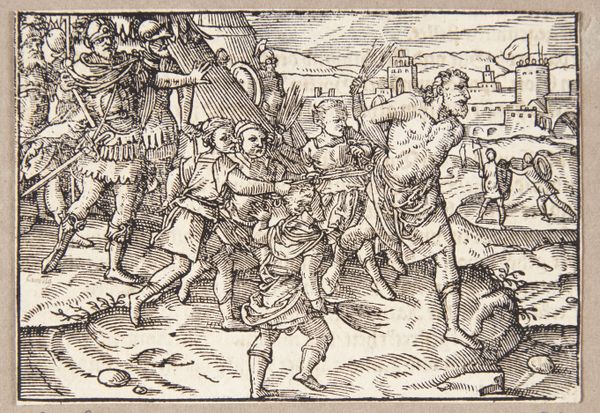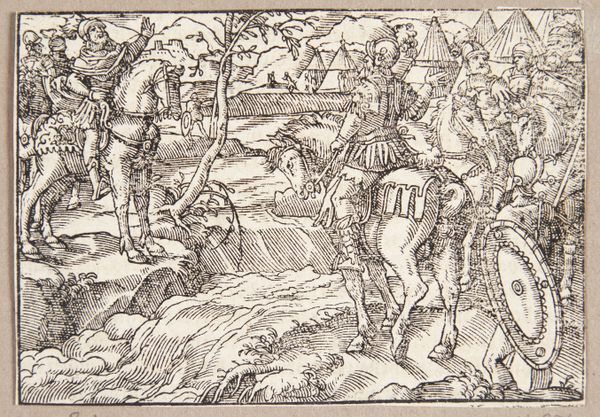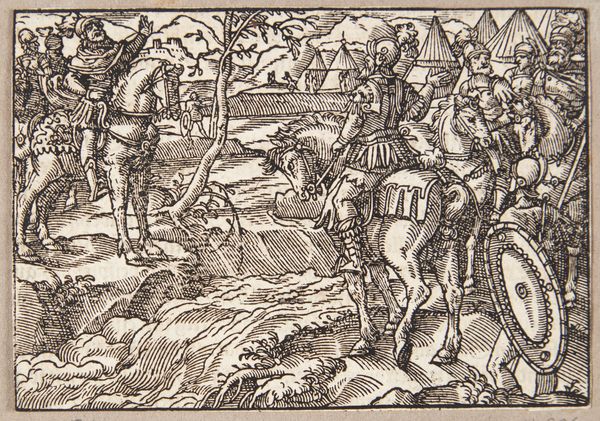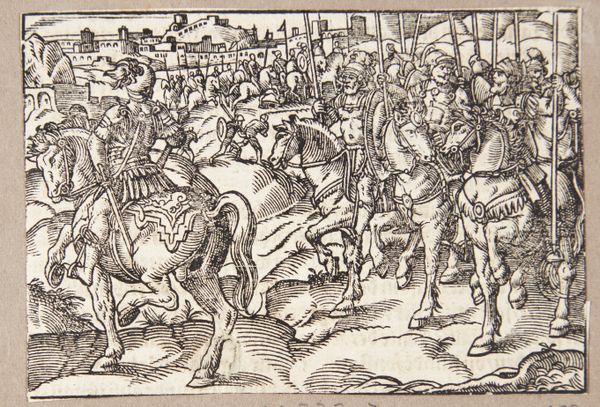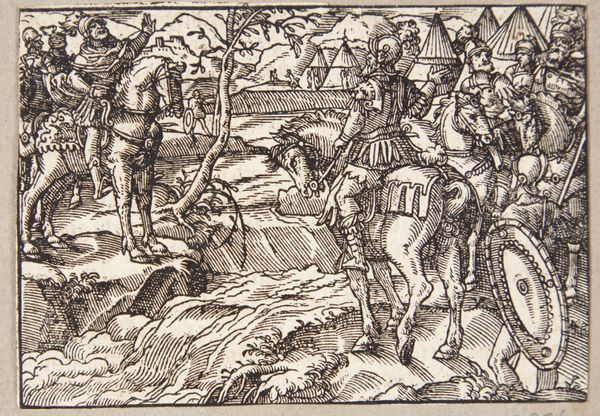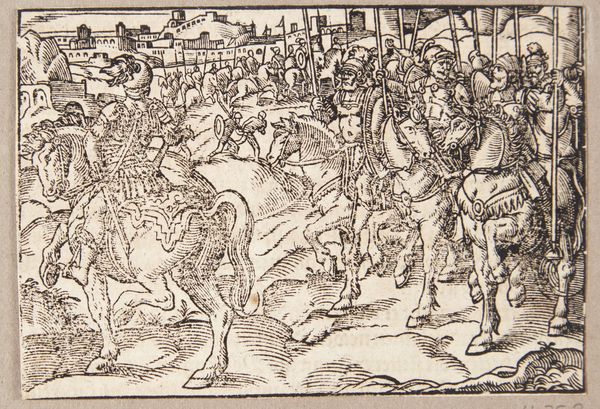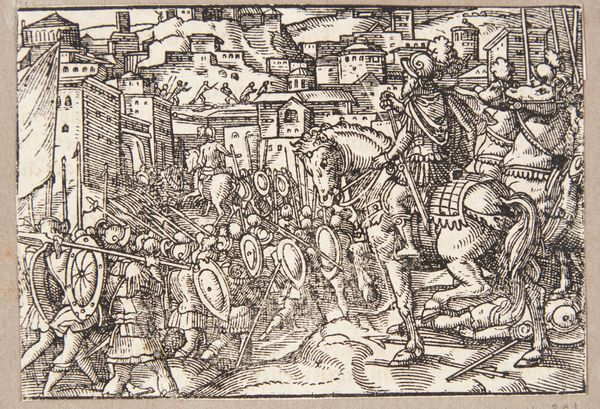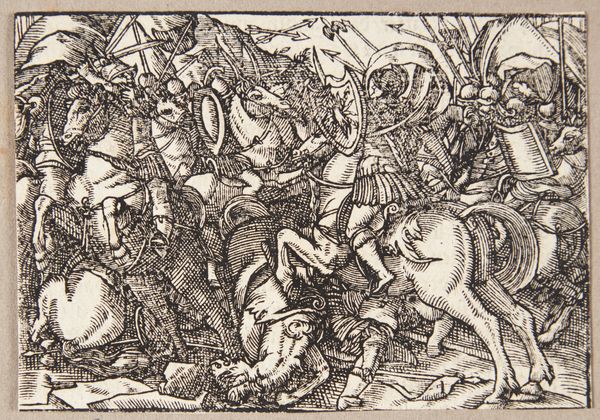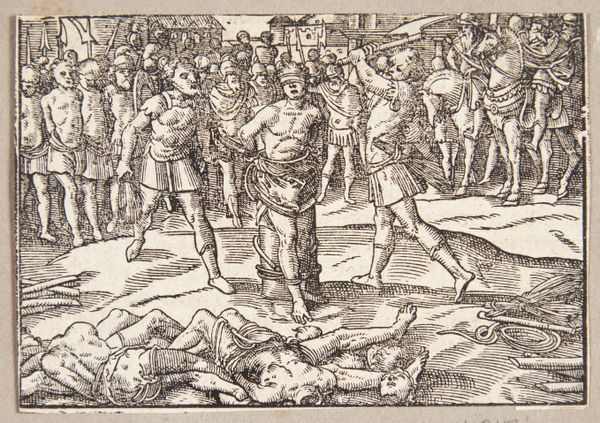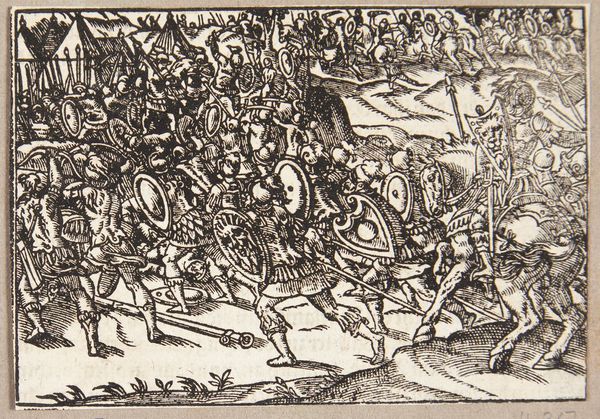
drawing, print, woodcut, engraving
#
drawing
#
medieval
# print
#
woodcut
#
history-painting
#
engraving
Dimensions: 75 mm (height) x 105 mm (width) (bladmaal)
Editor: This woodcut engraving, "Marcus Valerius in Battle with a Gaul", was created by Tobias Stimmer in 1574. It's a historical scene rendered with a very graphic quality. What stands out to me is how much the process of printmaking dictates the final image; the limited range of tones and the visible marks of the cutting tool almost become part of the subject itself. What do you make of it? Curator: From a materialist perspective, the stark black and white contrast is very telling. It points us to the socioeconomic landscape of 16th-century printmaking. Prints weren’t merely artistic expressions; they were a reproducible commodity. Consider the labour involved in carving the woodblock, the pressure exerted by the printing press, and how those repetitive actions impacted artistic choices. Editor: So you're suggesting the medium shaped the message, almost literally? How so? Curator: Exactly. Think about the distribution. These prints were cheaper and more accessible than paintings, broadening access to historical narratives. This particular battle scene wasn’t just a snapshot of the past, it became a tool for shaping societal understanding of Roman valour. Also, observe the artist's hand. Note the time taken, the carving marks – does the artist see any difference between that and say, the work done by someone preparing the printing press? Editor: I see what you mean. It moves beyond just representation and enters a discussion about access, production, and labour. I had focused mainly on the historical scene depicted, but now I'm appreciating how the material production has its own story to tell. Thanks. Curator: Absolutely! Looking at the materiality provides critical insights into the culture and socioeconomics of its time.
Comments
No comments
Be the first to comment and join the conversation on the ultimate creative platform.
